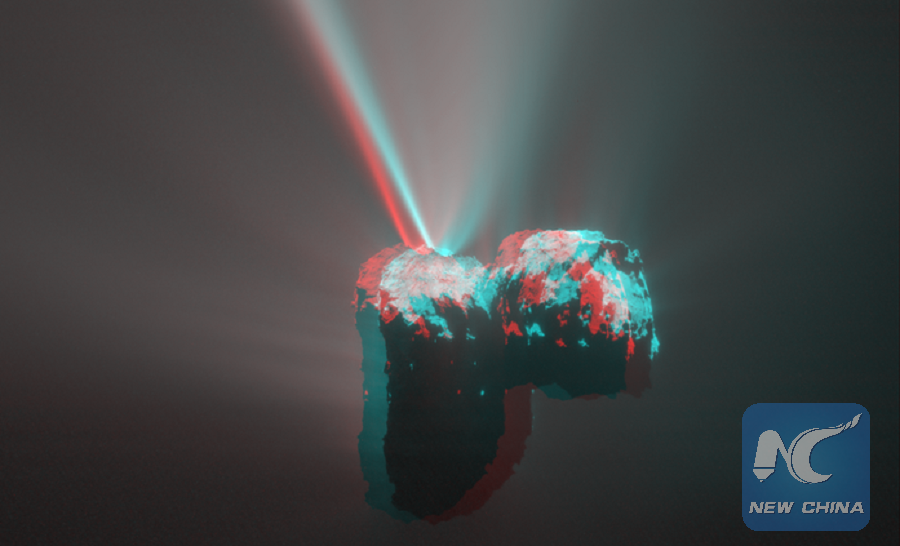
A 3D anaglyph view of Comet 67P/Churyumov-Gerasimenko based on two images from Rosetta's OSIRIS camera on 12 August 2015, capturing a spectacular jet. The two images are separated by 2 minutes 28 seconds, which corresponds to a stereo angle of 1.2o. The image scale is 3.9 m per pixel. In this orientation the Babi and Aker regions are visible on the large lobe to the left, while Ma'at and the circular Hatmehit depression are seen on the small lobe to the right. Diffuse dust emission and other jets are visible all around the nucleus. (Photo Courtesy of European Space Agency)
PARIS, Sept. 30 (Xinhua) -- European Rosetta spacecraft has ended its historic 12-year mission on comet chasing and made a crash-landing after collecting materials that "will keep scientists busy for decades to come," the European Space Agency (ESA) announced on Friday.
"ESA's historic Rosetta mission has concluded as planned, with the controlled impact onto the comet it had been investigating for more than two years," the agency said.
"The decision to end the mission on the surface is a result of Rosetta and the comet heading out beyond the orbit of Jupiter again. Further from the Sun than Rosetta has ever journeyed before, there would be little power to operate the craft," it added.
The collision manoeuvre which started last night, ended at 1119 GMT, "with the loss of Rosetta's signal upon impact."
The descent will help to study data on comet's gas, dust and plasma environment very close to its surface, according to the ESA.
"Thanks to a huge international, decades-long endeavour, we have achieved our mission to take a world-class science laboratory to a comet to study its evolution over time, something that no other comet-chasing mission has attempted, " noted Alvaro Gimenez, ESA's director of science.
"The mission has spanned entire careers, and the data returned will keep generations of scientist busy for decades to come," he added.
Launched in 2004, the spacecraft has chased comet 67P/Churyumov-Gerasimenko for over 10 years sand has traveled for about 8 billion km, passing the Earth, Mars, and two asteroids on its way.
Rosetta is the first spacecraft to orbit a comet and the first to deploy a lander, Philae, in November 2014.

